“Enheduanna and Inventions of Mesopotamia: First Person Perspective”
By Tarea J. USA
I’m Enheduanna, the ruler of Mesopotamia. You may have only heard of Mesopotamia in legend, but is was real. Mesopotamia was like a vast land of green bordered with two rivers. I loved to write poems. In fact, I’m the first known author in history! I was born high up in the palace where my mom slept her day away. In 2285 B.C., I was born. I was curious as a child, wanting to know why the sun rose and set everyday. I died 35 years later in 2250 B.C. Well, I don’t want to bore you with my curiosity, so let me tell you about some inventions that you use today that we are known for.
The first invention I will tell you about is glass. Glass was invented in the 4th millennium. Now you’re probably thinking, “How did they make glass in the first place?” Well, all we did was heat quartz up in high temperatures and put it somewhere to cool. Sometimes, we put it in a clay mold and when it cooled, we painted it. You use glass a lot in your time. You use it in cars, windows, jewelry, safes, and much more. Glass isn’t the only thing we invented though, but glass is one of the interesting ones. Glass was used for pottery, mosaics, animal sculpting, and much much more.
The next invention will be…hmmmmmm…wait! How about the wheel? The wheel is used every single day. The first wheel was made in 3,500 B.C. You can find it on bikes, cars, wheelbarrel, scooters, and much more. The wheel was first made of a log. These are the stages of the development of the wheel. Stage One: Early men placed rollers beneath heavy objects so that they could be moved easily. Stage Two: Early men began to place runners under a heavy load, which they discovered would make is easier for the load to drag. This was the invention of the sledge. Stage Three: Men began to combine the roller and the sledge. As the sledge moved forward over the first roller, a second roller was placed under the front end to carry the load when it moved off the first roller. A model of a sledge with such rollers is in the Smithsonian Institution. Stage Four: Soon, men discovered that the rollers which carried the sledge became grooved with use. They soon discovered that these deep grooves actually allowed the sledge to advance a greater distance before the nest roller was needed to come on!
Thus, in Stage Five: The rollers were changed into wheels. In the process of doing so, wood between the grooves of the roller were cut away to form an axle and wooden pegs were fastened to the runners on each side of the axle. When the wheels turned, the axle turned to the space between the pegs. The first wooden cart was thus made. Stage Six: A slight improvement was made to the cart. This time, instead of using pegs to join the wheels to the axle, holes for the axle were drilled through the frame of the cart. Axle and wheels were now made separately.
The next invention is my favorite, writing. The first identifiable written language is Sumerian, which was unrelated to any modern language. By 2,400 B.C., cuneiform had been adapted for writing Akkadian, and later was used for writing Assyrian and Babylonian; these are all Semitic languages, as are present-day Arabic and Hebrew. Cuneiform continued to be adapted for writing the languages of Mesopotamia’s neighbors, such as Hittite and Old Persian, and was used into the first century AD. In more recent times, it was deciphered in the 19th century, so that administrative, mathematical, historical, astronomical and school texts, omens, epics, letters and dictionaries can now be read by modern scholars.
There are around 130,000 tablets in the British Museum. From about 5,000 B.C., stamp seals, cut with simple designs, were used to mark ownership on clay sealings on storeroom doors. They were also found on the bags, baskets, etc. in which goods were traded up and down the Tigris and Euphrates. Around 3,500 B.C., the cylinder seal was invented; it provided room for elaborately carved designs, and could be rolled over clay.
Well, what have you learned from what I’ve told you? Let’s see, you learned a little about me, you learned about the beginning of the one and only wheel, you were told about the making of glass, and to top it off, you read about writing! Interesting stuff, right? I hope you learned a lot about the land of Mesopotamia. The land that is gone, but not forgotten. Mesopotamia is not called Iraq and Iran. These two countries are located in the Middle East.
I must now return to the realm of the spirits. I hope to see you again someday.
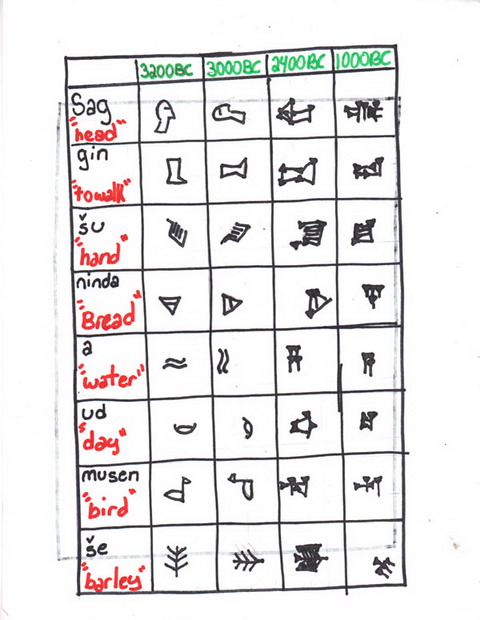
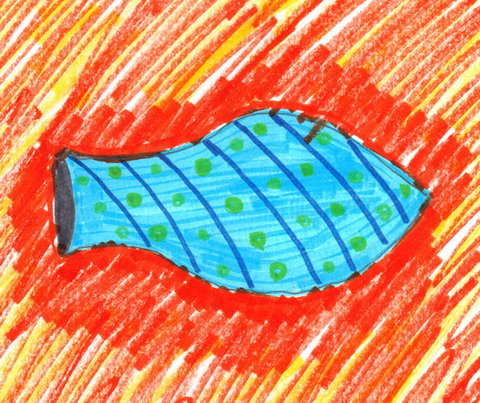
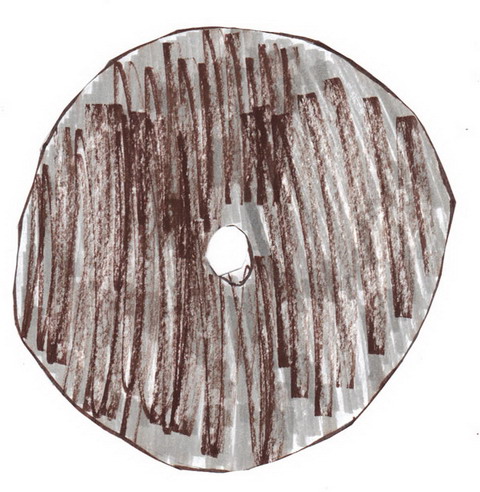
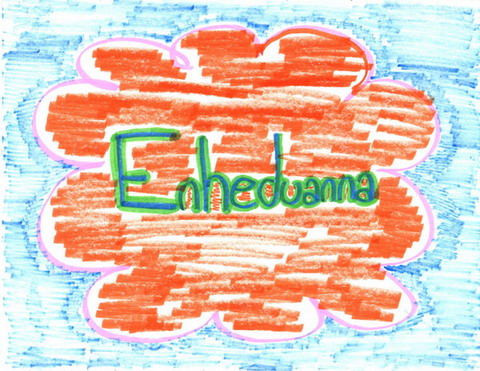
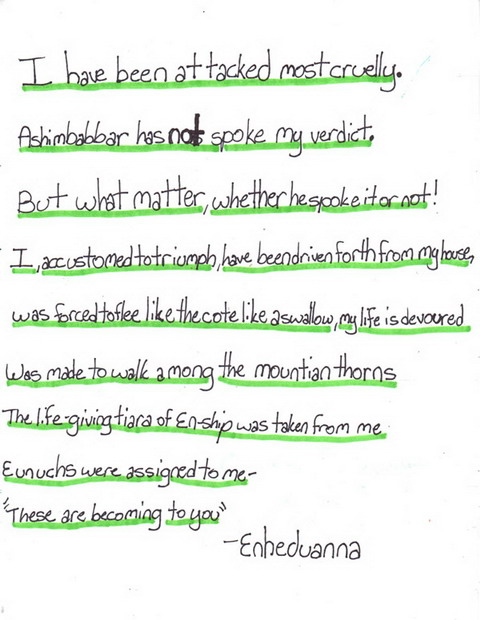
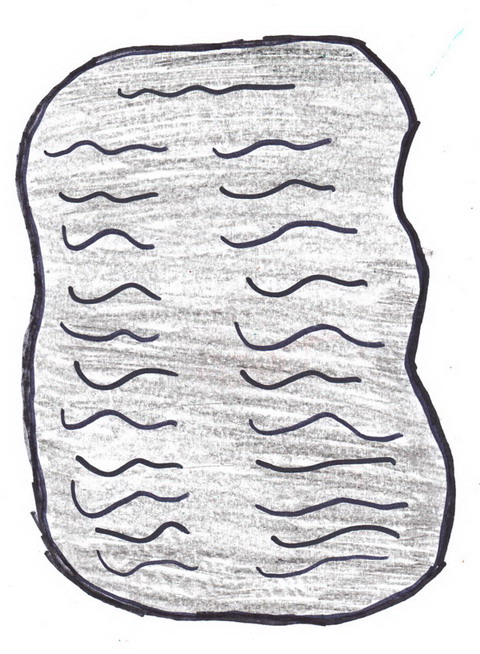
Binkle, Roberta. “Biography of Enheducanna, Priestess of Inanna.” www.cddc.vt.edu/feminism/enheduanna.html. 1998. Retrieved 2/15/13.
“Early Ancient Art.” www.collector_antiquites.com/54/ Retrieved 2/15/13.
“Invention of the Wheel.” Library.thinkingquest.org.2000. Retrieved 2/15/13.
“Writing.” www.ducksters.com/history/mesopotamia/sumerian_writing.php. Retrieved 2/15/13.
|
